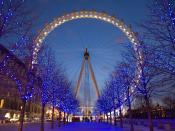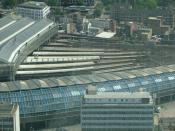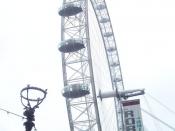The London Eye
The London Eye was part of many of London's millennium projects. Like the Millennium Dome and the Millennium Bridge it was known then as the Millennium wheel.
It is a joint project of British Airways, the Tussauds Group and the local architect firm Barfield Marks. The process of creating the final design, construction, assembly and operation had to be done in a time frame of 14 months as the Eye was to be opened on 1.January 2000. It is London's 4th tallest structure now and situated on the banks of the River Thames in the London Borough of Lambeth across from the houses of Parliament.
The development and construction of the London Eye is a typical example of a boosterism approach as explained by Hall (1994). It is a very one-dimensional attitude that sees tourism as naturally good and it will automatically benefit the host community.
Negative economic, environmental or social impacts are not considered. In this approach local residents or stakeholders are not involved in the policy process if they are opposed or not. There is almost no input by locals and they do not have any control of the plan. The opposite is the case. Objection towards the proposed plan is seen as unpatriotic as the project is seen as beneficial for the population as a whole and will raise the cities profile and image as a top destination (Hall, 1992).
This "flagship" project has received a special status by the National Government as it was seen as a hallmark event in course of other millennium projects as a way to celebrate the new millennium. It presented the government with an opportunity to secure high prominence for London in the tourism market place.
As Hall (1992) notes, hallmark events, like the celebration of...


